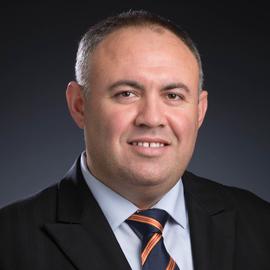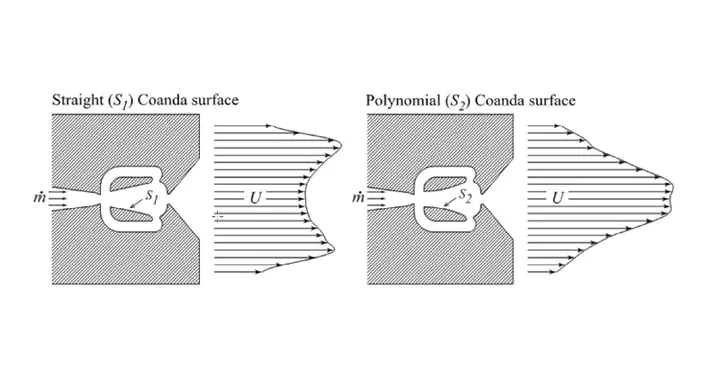Sensitivity of a fluidic oscillator to modifications of feedback channel and mixing chamber geometry
Abdul Raouf Tajik, Kursat Kara, Vladimir Parezanović
November, 2021
Abstract
This experimental study investigates the effects of internal geometry modifications on the performance of a curved Sweeping Jet actuator. The modifications are applied to the feedback channel’s geometry, the mixing chamber Coanda surface, and the resulting actuator properties are evaluated using time-resolved static pressure measurements inside the actuator and hot-wire measurements of the external flow. The significant result is that slight, localized modifications of the curved sweeping jet actuator geometry can lead to a complete change in the external flow regime, making the jet velocity distribution homogeneous, similar to the angled variant of the actuator. The Coanda surface shape is identified as the primary cause of the external jet adopting the bifurcated or homogeneous flow regime. The relationships between the sweeping frequency, jet deflection angle, required supply pressure, and pressure fluctuations are analyzed and discussed. External flow behavior and coherence are characterized by phase-averaged, phase-locked velocity profiles and auto-correlation of the velocity signals.
Publication
Experiments in Fluids

Kursat Kara
Associate Professor, Mechanical and Aerospace Engineering
Kursat Kara is an Associate Professor of Mechanical and Aerospace Engineering at Oklahoma State University and principal investigator of the Kara Aerodynamics Research Laboratory. His research spans hypersonic boundary-layer physics, unsteady aerodynamics, and the emerging interface of quantum computing and fluid dynamics. A dedicated educator and mentor, he teaches core and advanced courses—including Fundamentals of Aerodynamics, Computational Fluid Dynamics, Boundary-Layer Theory and Transition, and Quantum Computing—and supervises graduate and undergraduate projects in high-fidelity simulation and data-driven modeling. His work has been funded by NASA, NSF, Oklahoma NASA-EPSCoR, NAVAIR, ANSYS, and IBM Quantum. In 2025, he received the CEAT Excellent Faculty Award and was nominated for both the 2024 Excellent Teacher Award and the 2025 Excellent Faculty Award by OSU’s School of Mechanical and Aerospace Engineering. Dr. Kara earned his Ph.D. from Old Dominion University with a dissertation on hypersonic boundary layer receptivity to acoustic disturbances. He began his career as a research engineer at New England Analytics (supporting Sikorsky Aircraft), then completed a post-doctoral appointment at Penn State in hot jet simulations for aeroacoustics. In 2010, he helped establish the Aerospace Engineering Department at Khalifa University—where he won the President’s Faculty Excellence Award for Outstanding Teaching in 2015—before joining OSU. An active member of AIAA and APS, he served on the AIAA Applied Aerodynamics Technical Committee (2012–2021) and chaired/co-chaired multiple AIAA conferences. He also sits on the editorial board of Nature Scientific Reports and guest-edits its Quantum Computing collection.
